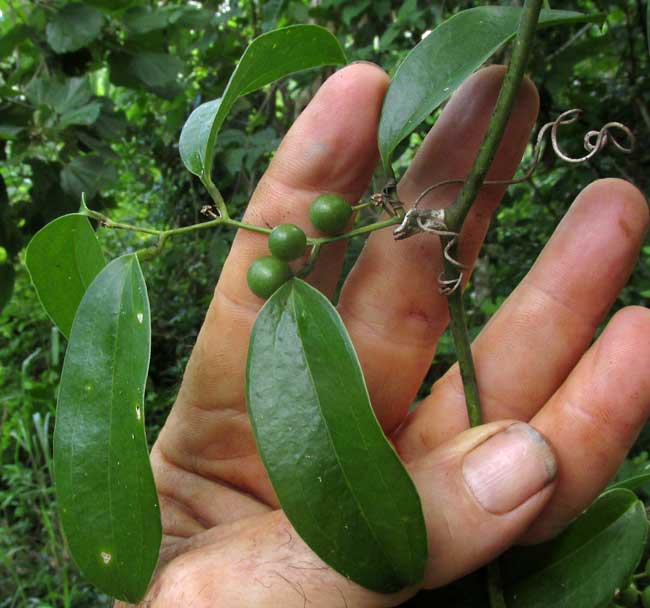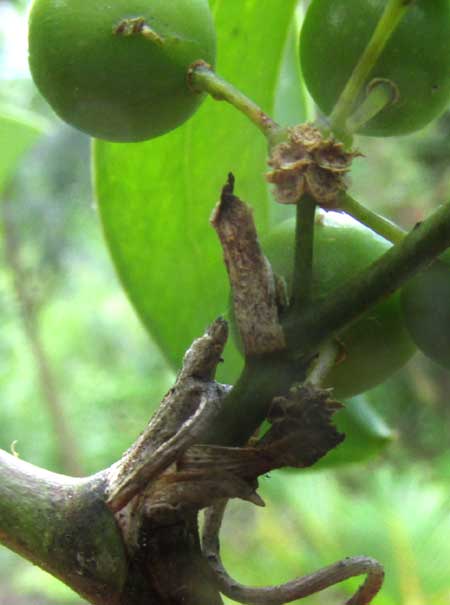Excerpts from Jim Conrad's
Naturalist Newsletter
from the August 20, 2017 Newsletter issued from Rancho Regenesis in the woods ±4kms west of Ek Balam Ruins; elevation ~40m (~130 ft), N20.876°, W88.170°; north-central Yucatán, MÉXICO
A TROPICAL GREENBRIAR
Yet another woody vine looking familiar to any Northern woodsperson, but out of place here in the forest, is the one shown below:

What could that be but a greenbriar, one of those stickery vines that leave bloody cuts across your ankles and legs if you're not watching as you walk along forest trails up north? Greenbriars are members of the genus Smilax, and this is SMILAX SPINOSA, without any good English name beyond the general one of greenbriar. It's distributed from southern Mexico into Central America. Below, you can see a picture showing a spine arising from the stem:

In that picture the spine is mostly enclosed within a papery, dirty-gray sheath; it's the object pointed upward in the picture's lower, left quarter. And that spine is woody and as sharp as its Northern counterparts.
In much of Mexico -- where often it's called Zarzaparrilla, though in Yucatan Maya it's Koke' -- the vine is believed to possess medicinal value. Especially it's appreciated for treating syphilis and general inflammation of the genitals, as well as for menstrual disorders. During childbirth it can increase the rate of uterine contractions. The whole plant is used, either alone or in combination with Epazote and mint. The plant also is used for stomach and intestinal problems, skin wounds, rheumatism, as a stimulant, and several other ailments.
This information on the greenbriar's medicinal use, as well as many other pages dealing with many Mexican medicinal plants, is freely available, in Spanish, in the Atlas de las Plantas de la Medicina Tradicional Mexicana at http://www.medicinatradicionalmexicana.unam.mx